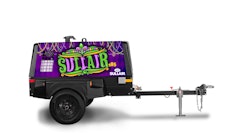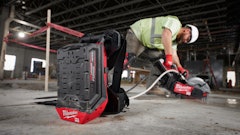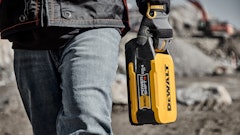
Electronic fuel injection (EFI) technology has become a staple for helping rental companies' customers achieve maximum engine efficiency and improve the overall user experience.
EFI originated in the automotive and power sports industries and evolved to fit the small engines found in the outdoor power equipment segment.
Replacing the need for a carburetor that mixes air and fuel, EFI systems inject fuel directly into an engine's manifold or cylinder using electronic controls.
“The main benefit that you're going to see is that you're going to have peak performance across the board,” says David Bush, senior marketing manager for generators and engines at Honda Motor Co. “Thinking about a traditional carburetor, if those become clogged, your mixture of the fuel and air will not be at an optimal level and they may be running lean, meaning they’re not getting enough fuel, so the engine is not going to operate properly, or they may be running rich, which will affect the fuel consumption and they may get clogging on some of the spark plugs or some gumming on the valves.”
In addition to upping engine efficiency, EFI improves user experience by providing all-weather chokeless starting, according to Steven Stewart, assistant manager, R&D testing, EFI development and calibration, Kawasaki Engines.
“Like a modern automobile, you just turn the key and it's up and running, regardless of the ambient conditions,” Stewart says. “Finally, engines with EFI technology fare better in long-term storage conditions compared to other fuel systems because most of the system is not directly exposed to oxygen—the biggest catalyst for fuel degradation.”
Bush, Stewart and Tom Billigen, training and development manager, Briggs & Stratton, share the latest updates with this technology and how it benefits rental companies and end users.
What’s New
In recent years, outdoor power equipment has experienced more adoption of electronic throttle control (ETC) on EFI engines.
Stewart notes that the benefits of ETC are twofold.
First, it provides precise control of the airflow into the engine, which allows the electronic control unit to have a robust and responsive governor control. In turn, reactions to load demands are instantaneous, and the engine speed is controlled more precisely than with any other type of electronic governor.
Second, electronic throttle control maintains engine speed at the operating limits, eliminating the loss of power that comes from mechanical governor droop. This means all of the engine’s power is available all of the time.
“Both benefits are going to be noticed through improved quality and improved productivity,” Stewart says. “It offers superior control of engine torque and power under all conditions, and the industry has responded and realized this is the best way to implement an electronic governor because of the benefits it offers.”
Billigen agrees.
“The ETC system helps ensure smooth and consistent power with any load size or terrain type that a piece of equipment may encounter,” Billigen says. “For end users, the ETC system helps to deliver a more consistent blade speed for better cut quality and grass clipping processing. It also helps to enhance productivity in the field by allowing end users to maintain a higher ground speed while cutting.”
Additionally, more original equipment manufacturers are making use of controller area network (CAN) bus data and control functions to help improve the overall user experience.
“Using engine control over CAN simplifies the electrical architecture and allows for the chassis to have smart control over the engine speed,” Stewart says.
Maintenance Items
One common misconception with EFI engines, according to Billigen, is that there is less of a need for routine servicing of engine oil, spark plugs and filters.
“This is not the case, and companies should stay on top of both preventive and routine maintenance to keep operations running smoothly, mitigate equipment failure and limit downtime on the job,” Billigen says. “The maintenance intervals of an engine with EFI technology should still be performed at the recommended hours of operation, and this especially applies for fuel filter maintenance.”
Overall, Stewart says the maintenance is still simpler with an EFI engine than with a traditional carburetor engine.
“Don’t be afraid to take the plunge even if you aren’t familiar with the technology,” Stewart says. “The maintenance should be easier than with a carburetor, especially with engines that utilize comprehensive on-board diagnostics.”






























